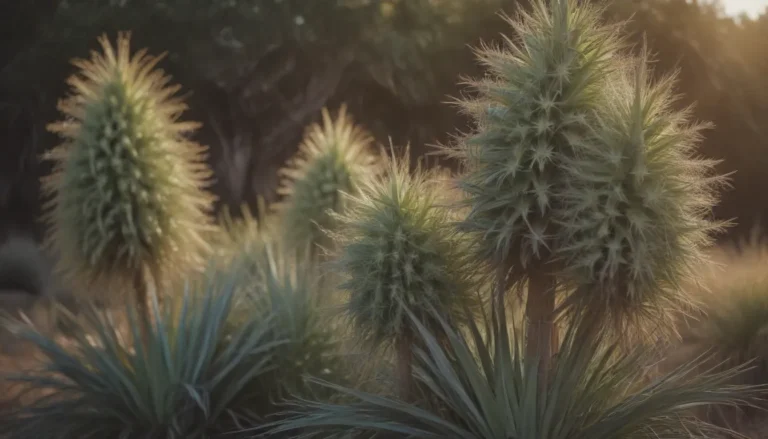Ultimate Guide to Growing and Caring For Petunias

Petunias are a beloved staple in gardens and pots everywhere. These colorful flowers are known for their prolific blooms and wide variety of colors and shapes. If you’re a petunia enthusiast or looking to add these beautiful plants to your garden, you’ve come to the right place. In this comprehensive guide, we will cover everything you need to know to grow and care for petunias successfully.
Overview of Petunias
Petunias belong to the Petunia genus and come in a wide range of varieties, including hybrids with single or double blooms, ruffled or smooth petals, and mounding or cascading growth habits. While petunias are fast-growing plants that reach their full size by late spring, their lifespan varies depending on your climate. In cold climates, petunias are annuals that last a single growing season, while in warmer zones, they can come back year after year for about three years.
Types of Petunias
There are different types of petunias categorized based on their characteristics, including:
– Grandiflora
– Multiflora
– Floribunda
– Milliflora
– Trailing/spreading
Each type of petunia has its unique traits and care requirements, so it’s essential to choose the right variety for your specific needs.
Petunia Care Tips
Taking care of petunias involves providing them with the right conditions to thrive. Here are some essential care tips to ensure your petunias flourish:
Light
Most petunia varieties thrive in full sun, meaning they need at least six hours of direct sunlight daily. However, during the hot summer months, partial shade can help protect the plants from harsh sun exposure and keep them blooming beautifully.
Planting and Soil
Petunias prefer light, fertile soil with good drainage. They can adapt to various soil types as long as they are well-draining and slightly acidic. When planting petunias, make sure to space them about a foot apart and wait until after the threat of frost has passed.
Water
Petunias don’t like to be dry for extended periods, but they also don’t thrive in soggy soil. It’s best to water them regularly, making sure the soil doesn’t dry out more than 2 inches down. Different petunia varieties may have varying water needs, so adjust your watering routine accordingly.
Temperature and Humidity
The ideal temperature range for petunias is between 60 to 75 degrees Fahrenheit during the day and 55 to 65 degrees Fahrenheit at night. Petunias can tolerate low temperatures down to 40 degrees Fahrenheit, but frost can damage or kill the plants. Moderate humidity levels are best for optimal growth.
Fertilizer
Fertilize petunias at planting with a balanced fertilizer and continue feeding them every two to three weeks with a liquid fertilizer designed for flowering plants. Some petunia varieties may require more frequent fertilization, so check individual care instructions for specific needs.
Pruning Petunias
Pruning plays a crucial role in promoting healthy growth and abundant blooms in petunias. When planting young petunias, consider pinching back the stems to encourage branching and a fuller appearance. The extent of pruning will depend on the plant’s growth pattern, so tailor your pruning technique accordingly.
Propagating Petunias
Petunias can be propagated through stem cuttings, allowing you to cultivate specific varieties indoors and plant them outdoors after frost. Taking cuttings from healthy plants in the fall is a great way to expand your petunia collection and preserve unique varieties for future seasons.
Growing Petunias From Seed
While it’s common to purchase young petunia plants from nurseries, growing petunias from seed can be a rewarding experience, especially if you’re searching for a particular variety. Start your petunia seeds well in advance of the last frost date, following specific planting instructions to ensure successful germination and growth.
Potting and Repotting Petunias
Using quality potting mix is essential when growing petunias in containers. Ensure your pots have adequate drainage and enough space for the plants to thrive. Avoid repotting petunias during the growing season to prevent root disturbance and promote healthy development.
Dealing With Pests and Diseases
Keep an eye out for common pests like aphids, flea beetles, slugs, and snails that may target petunias. In case of infestation, use insecticides to control the problem. Petunias can also be susceptible to fungal diseases like gray mold, especially in rainy climates. Choose disease-resistant varieties to minimize the risk of fungal infections.
Maximizing Blooms
To encourage continuous blooming in petunias, deadhead spent flowers regularly to promote new growth and prolong the blooming season. Some newer petunia varieties may not require deadheading, but it can still benefit their overall appearance and performance.
Troubleshooting Common Problems
If you encounter issues like wilted flowers, leggy stems, or other problems with your petunias, follow specific care recommendations to address the issue promptly. With proper care and attention, you can keep your petunias healthy and vibrant throughout the growing season.
Petunias are versatile and easy-to-grow plants that can enhance any garden or outdoor space with their vibrant colors and cheerful blooms. Whether you’re a seasoned gardener or a beginner, incorporating petunias into your landscape can add a touch of beauty and charm to your surroundings. By following the tips and guidelines outlined in this guide, you can cultivate thriving petunias that will brighten your days and delight your senses.





